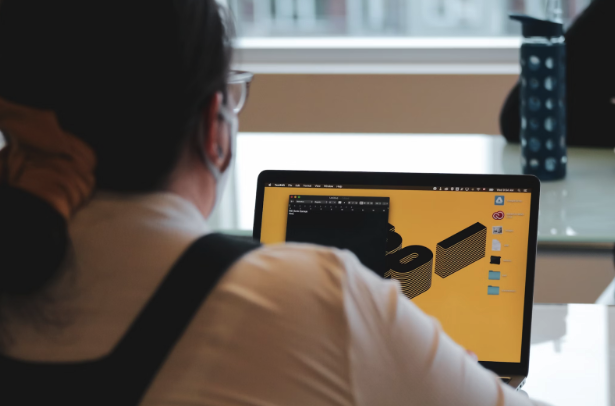Fabricators strive to produce top-of-the-range components that are of high precision, and effectiveness as well as automated. In the modern integration of different systems within CNC ( Computer Numerical Control) machining), there is automation and increased productivity in the business due to high precision and consistency in the processes. Commanding machine and computer technology in CNC application enables improvement in production as well as collaboration with the best machining companies in order to take advantage of the efficiency and quality.
Precision parts, no matter how complex their geometry are, are accurately produced by different industries making use of CNC machines such as in aerospace, automotive, medical devices and industrial equipment field. There is more to know about CNC machining and this guide will assist you in understanding all parts and features of CNC technology, how it operates, and the advantages for businesses in enhancing their production through the use of CNC machining.
What is CNC Machining?
CNC machining is an automated subtractive manufacturing method that utilizes specialized tools and machinery for the fabrication of parts and components using a computerised software or application. This makes processes such as cutting, boring, drilling, milling, and other operations as seamless and efficient as possible due to the automation and its counterpart, repeatability of traditional machining making it both effective and efficient.
In manufacturing, high-level precision is tough to achieve but with CNCs, tailor-made geometries can be achieved offering cost effectiveness in the long run.
Machining manufacturing companies utilize CNC technologies for a wide range of activities, such as small prototyping projects as well as large production runs, which ensures businesses get the required level of quality while using minimum materials.
Key Components of a CNC Machine
A CNC machine has several basic elements for performing accurate machining operations that rely on single or multiple sequential processes. These components must be known to periphery businesses seeking to enhance their machining operations.
Machine Frame and Structure
As with other mechanical machines, CNC frames give the needed support and stability to achieve high accuracy during machining. The frame of most CNC machines is made of cast iron or steel to suppress vibrations and improve strength.
Control Panel and Computer Interface
Like in many systems, the control panel is the “directive center” of a CNC machine. They have a screen, keyboard, and other devices for input that enables operators to input machining parameters, control the movements of the machine, and check the status of the machine.
Spindle and Cutting Tools
The spindle rotates the cutting tool, designed to remove a material at a specified rate, and at the same time it rotates towards the tool. Some of these tools are end mill, drills, and lathe. Each is particularized for a machining process and a material that would be machined.
Worktable and Workholding Devices
A worktable is a supporting structure of raw material that needs to be machined.
The use of clamps, vises, and fixtures achieves immobility during cutting activities and maintains accuracy as well as stability throughout the process.
Linear Motion System (Guideways and Ball Screws)
The CNC machines have high quality guideways and ball screws for the cutting tools and these parts allow relative smooth motions to be done in X,Y and Z axes.
Cooling and Lubrication System
CNC machines have a system of coolant and lubricant applied to help reduce overheating and wear on the tools. This reduces the friction, disperses heat, and will most certainly enhance the durability cutting tools.
How CNC Machines Work
The CNC machining process needs to undergo differnet steps that guarantee to deliver efficient and quality product outcome.
Step 1: Designing the Part (CAD Modeling)
This step starts with a part that has a CAD (Computer Aided Design) software. This clearly specifies features such as dimensions, tolerances as well as material options.
Step 2: Converting CAD Design to Machine Code (CAM Processing)
After the design looks good, it is taken to CAM (Computer Aided Manufacturing) software to be put into G-code. G-code is identified as the programming language of CNC machinery, outlining the movements of the tools, speed of the spindle, and the cutting path.
Step 3: Material Setup and Workpiece Positioning
The raw material is firmly fastened on the CNC worktable which ensures that there is no movement during the machining process.
For still maintaining accuracy while machining, custom alignment of the parts needs to be done correctly.
Step 4: The Performing of the Machining
With a working CNC machine, the G-code part program that is stored in the machine will be executed, the machine will make the cuts, drills, and milling, while also performing turning set actions. The routine preforms, angles metered CNC machines (3 axis, 4 axis and five axis) are programmed to perform complex machine processes with very little human imputation.
Step 5: Inspecting and Polishing the Quality
The last steps of the machining process is how every single piece is processed and measured through m multi precision devices, CMM machines and spatial coordinate measuring instruments. Further polishing processes like anodizing, deburring and the simple polishing can be done if necessary.
Coupled Varieties of CNC Machines
Variegated machines fulfill distinct manufacturing functions uses. Each type is made for an assigned machine process and an industry.
CNC Milling Machines
Mills remove material through use of the mounted rotary cutting devices onto a the still stationed work piece/s. The best for constraining elements with complex forms and multi-level features with high accuracy levels.
CNC Lathes (Turning Centers)
Mills remove material through use of the mounted rotary cutting devices onto a the still stationed work piece/s. This type of machine is common while providing bushings, shafts and many other cylindrical and shaped symmetrical components.
CNC Grinding Machines
Grinders cut surfaces with ultrasonic abrasive wheels with extreme precision.
These machines were designed for specific tooling and finishing applications.
CNC Laser Cutting Machines
A laser cutter uses a high-powered laser to cut, engrave or etch metal, wood, or plastic materials. This is used in automotive, aerospace, and signage industries.
CNC Wire EDM (Electrical Discharge Machining)
Wire EDM machines utilize controlled electric discharge to cut out conductive materials with utmost precision. It is perfect for highly intricate designs along with delicate components.
Advantages of CNC Machining for Manufacturing Companies
CNC is highly recommended in manufacturing processes due to the numerous benefits it offers along with high precision CNC machining.
Consistent Quality and Precision
CNC machines are capable of achieving tolerances of up to ±0.001mm and guarantee a certain level of quality after each production run. Industries that are focused on exact standards will find this level of performance extremely beneficial.
Enhanced Automation and Efficiency
CNC machines along with automation features are able to reduce and/or eliminate manual work while enhancing production speed. This feature allows manufacturers to easily produce a large quantity of parts.
Diversity in Material Processing
CNC technology can operate with a variety of metals such as aluminum, steel, and titanium along with plastics such as ABS, POM, and PTFE. Ths versatility makes CNC machining appropriate for a wide range of industries.
Production Cost CNC Machining
Long term benefits essentially outweigh the costs due to the high windows of investment during set up. CNC eases material waste, rework, and man power needed making it the ultimate money saver.
CNC Machining Scalability for Prototyping & Mass Production
Unlike many manufacturing processes, CNC machining enables a manufacturer to either create one-off prototypes or start mass production without compromising on quality. This flexibility is very important for companies trying to innovate new products.
Selecting the Appropriate CNC Machining Manufacturing Company
It’s critical to choose the right machining manufacturing companies since that will affect the accuracy of CNC-milled parts. As such, companies must judge prospective CNC partners with the following considerations:
– Industry Experience: Select a firm that has experience in your industry (aerospace, medical, automotive, etc.).
– Technological Capabilities: Confirm that they possess the necessary equipment like advanced CNC machines with multi-axis functionalities.
– Quality Assurance: Check if the company is ISO 9001, AS9100, IATF 16949 certified.
– Production Capacity: Assess if they can perform both prototyping and mass production.
– Customer Support: Choose a manufacturer with quick response times for customer support and engineering constraints.
Conclusion
Firms must possess adequate levels of CNC machine basic knowledge if they intend to incorporate precision machining within their operations. Aligned with these machining manufacturing companies, businesses can make the most out of CNC technology and therefore enhance productivity alongside quality and capabilities in the modern landscape of manufacturing.
While industries grow and diversify, CNC machining will always be one of the pillars of modern manufacturing because of the unmatched accuracy, effectiveness, and flexibility it provides businesses around the globe.





